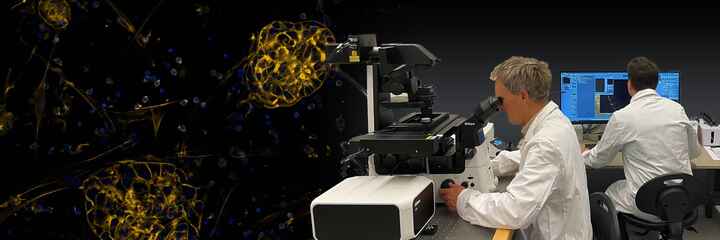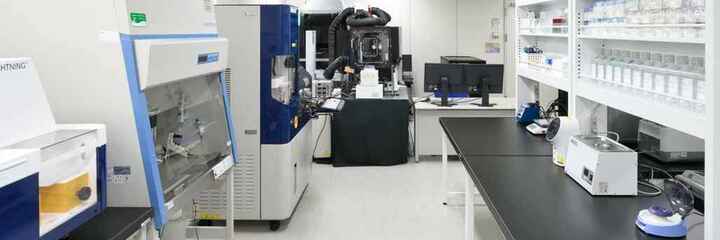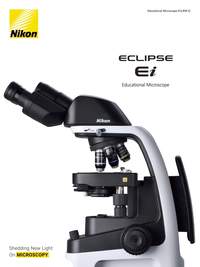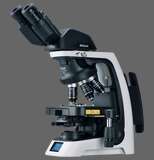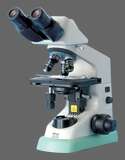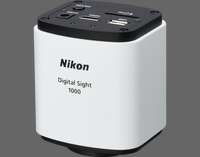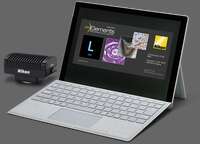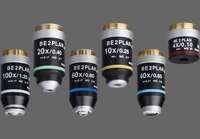
An Inside Look Capturing Their Curiosity
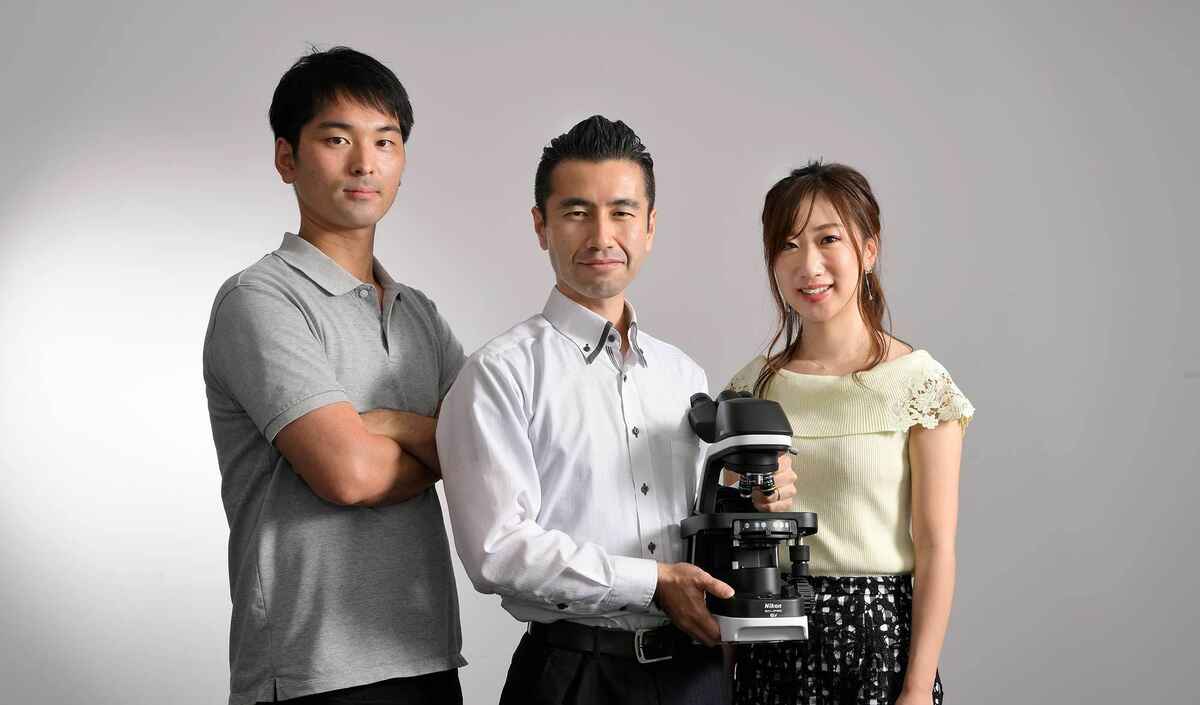
The ECLIPSE Ei educational microscope was developed with a goal to “provide an intuitive, easy-to-use microscope for students who have never used a microscope before.” By lowering the learning curve, students can focus on the curiosity-inspiring images seen through the microscope. Members of Nikon’s Marketing, Engineering, and Design departments share their thoughts below on the design and production process of this unique microscope.
A Microscope for a New Generation
Saigo: The introduction of digital networks has had a significant impact on education. When we started developing the Eclipse Ei, we sought to meet the needs of the new generation of users in the educational field. We wanted to incorporate features that would benefit not only the students but also those who were providing the teaching or training. The “Online Guide” is an easy-to-use operation manual for the Eclipse Ei that can be quickly accessed on a smartphone. By providing users with this easily accessible guide, we hope to remove the intimidation of learning to use a microscope. By reducing such barriers, we can empower students to focus on the wonderment and excitement of seeing images through the microscope for the first time.

Takuro Saigo
(ECLIPSE Ei Product Planning)
1st Production Planning Section
Marketing Department
Marketing Sector
Healthcare Business Unit
Suzuki: When we began designing the microscope, we wanted to focus on reducing its weight. Microscopes used in educational laboratories are handled very differently from those in research labs. At the beginning of each lab session, educational microscopes are taken out of storage, usually by the students, and placed at the benches. At the end of the session, they are returned to their storage units. Our goal was to create a light and compact microscope that could be easily carried by students, while robust enough to withstand frequent handling. To compensate for the reduced weight,, the arms and stands on which the tubes are mounted had to be more rigid in order to support the overall load and to provide a stable platform for observing microscopic objects. I had many discussions with Odajima from the Design Center during which we considered every aspect of the microscope that could be minimized in order to reduce its weight. In the end, we were able to reduce the weight by 30% compared to previous models. This was accomplished by streamlining the design, reducing the numbers of parts such as screws, and and integrating and downsizing electrical panels.

Toshiya Suzuki
(ECLIPSE Ei Design)
1st Design Section
1st Development Department
Optical Engineering Division
Odajima: Our aim was to break stereotypes regarding microscopes. Microscopes are often heavy and difficult to carry and use. We wanted to mitigate such stress factors so that users can concentrate on their studies and, above all, enjoy looking through their microscope. We eliminated any unnecessary elements and focused on creating a more organic, user-friendly form. For example, the curves on the Eclipse Ei accommodate the form of the hand grip better, improving the overall carrying aspect of the microscope. A simple color scheme of black and white, with black used for the optical system and white for the base and the stand, emphasizes the microscope’s beautiful form. We hope that this stylish and easy-to-use microscope will light up classrooms and research laboratories.

Toshiko Odajima
(ECLIPSE Ei Design)
ID Group
Design Center
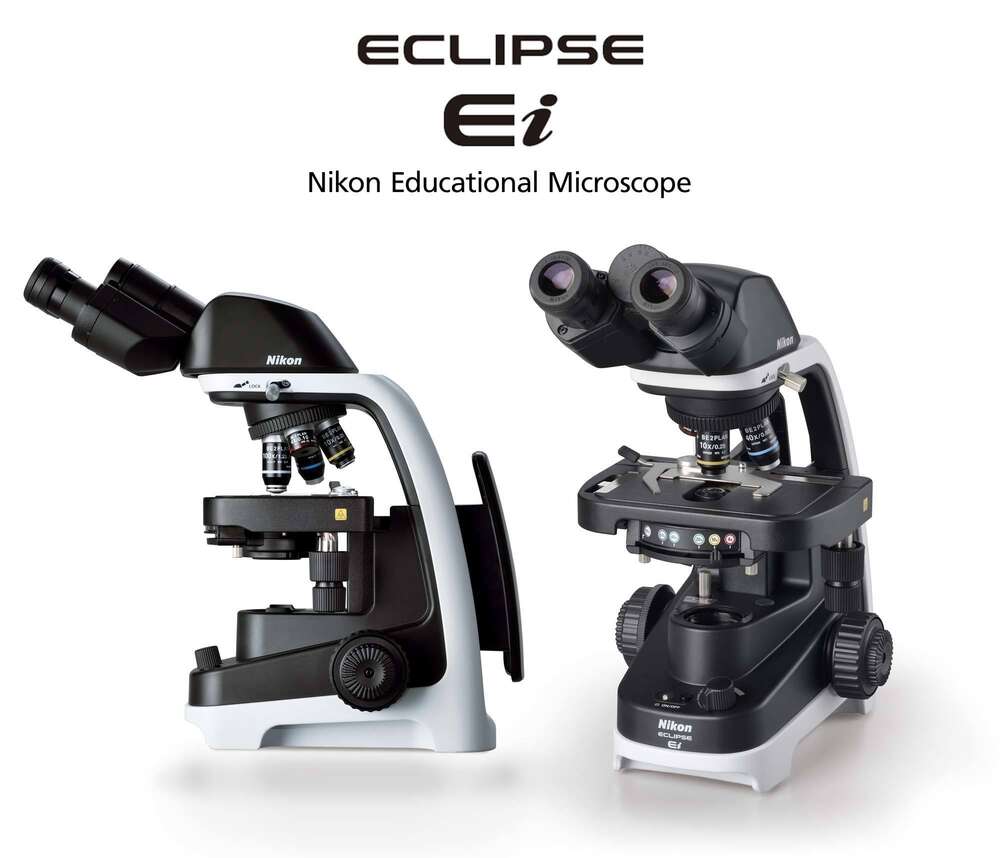
Shared learning through the microscope
Saigo: As I mentioned earlier, the Online Guide was developed to aid new users. By scanning the QR code on the microscope, users can quickly access the operating manual. The manual provides short, easy-to-follow videos on how to operate the microscope. The Onliene Guide can be used as a preparation tool before hands-on training, or after, for reinforcing concepts. The Eclipse Ei can also be configured with a digital camera. The camera can be directly connected to a monitor, enabling users to easily share what they are viewing through the microscope with larger groups of people, in real-time. This feature is not only useful for in-person classes but makes virtual or remote teaching experiences much more impactful. The Eclipse Ei was designed to move away from a “one microscope for one user” concept to a “one microscope for everyone” where a single user can instantly share the amazing world of microscopy with many people.
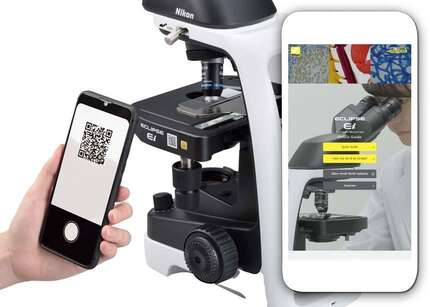
The Online Guide is accessed by scanning the QR code
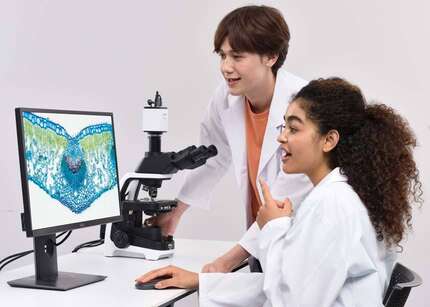
Sharing discoveries by projecting the image onto a monitor
Suzuki: In addition to reducing its weight, we applied our design expertise to every aspect of the microscope to reduce the learning barrier and empower first-time users. One of the biggest disappointments for beginning users is not seeing anything through the microscope or seeing objects unclearly. To improve the chances of finding the specimen, we expanded the field of view by 1.2 times compared to previous models. We also improved the illumination mechanism to ensure uniform brightness from the center of the field of view to the periphery. Good visibility directly translates to good usability. We further pooled our ideas to streamline microscope operation itself and reduce user stress. We minimized protrusions when designing the shape of the stage to reduce the chances of accidental bumping. Coarse and fine focus adjustments were included on both sides of the microscope to accommodate the use of both hands. We also incorporated a feature that sets an upper travel limit for the stage to prevent the objective from colliding with the specimen. Objective damage through over-focusing is a common problem for first time users. Our priority was to design a microscope that was user-friendly and enables students to operate the microscope with confidence.

Wide field of view compared to previous models

Compact stage with simple form and no protrusions

Easily set an upper travel limit for the stage
Odajima: The organic form of the Eclipse Ei incorporates negative cavities or hollows on the sides and front of the stand so that users can easily grasp the microscope from any direction for transportation. A pocket was designed at the back of the microscope for neatly storing the AC adaptor and a cord spool for easy winding of the power cord. A center slit was incorporated in the cord spool to accommodate the varying lengths and diameters of power cords that exist in different countries. These simple storage solutions ensure that that components don’t get lost at the end of the lab session.
In terms of the user interface, we wanted to create an intuitive experience that would enhance the student’s confidence and encourage independent learning. To achieve this, we designed labels that utilize easy-to-follow illustrations and color-coding . For example, condenser aperture positions are color-coded according to the color labels on the objectives. With this color-coding system, students can easily find the correct condenser aperture position for the objective they are using. Simple illustrations on the stage show which parts of the stage handle moves the stage in a particular direction. Such illustrative labels are also used to show how to use the fixing screw for the tube. With all of these design features, we wanted to eliminate the frustrations of learning to use a microscope so that students can focus on the excitement of seeing wonderful images through the microscope.


Multiple hollows in the stand and two separate arm structures enable users to easily balance and carry the microscope

Integrated AC adapter storage pocket

An integrated cord spool with a center slit accommodates spooling of a variety of long and short cords.

The lever position for the aperture is displayed with icons in the same color used for the objective lenses.

The role of the fixing screw on the eyepiece tube is illustrated.
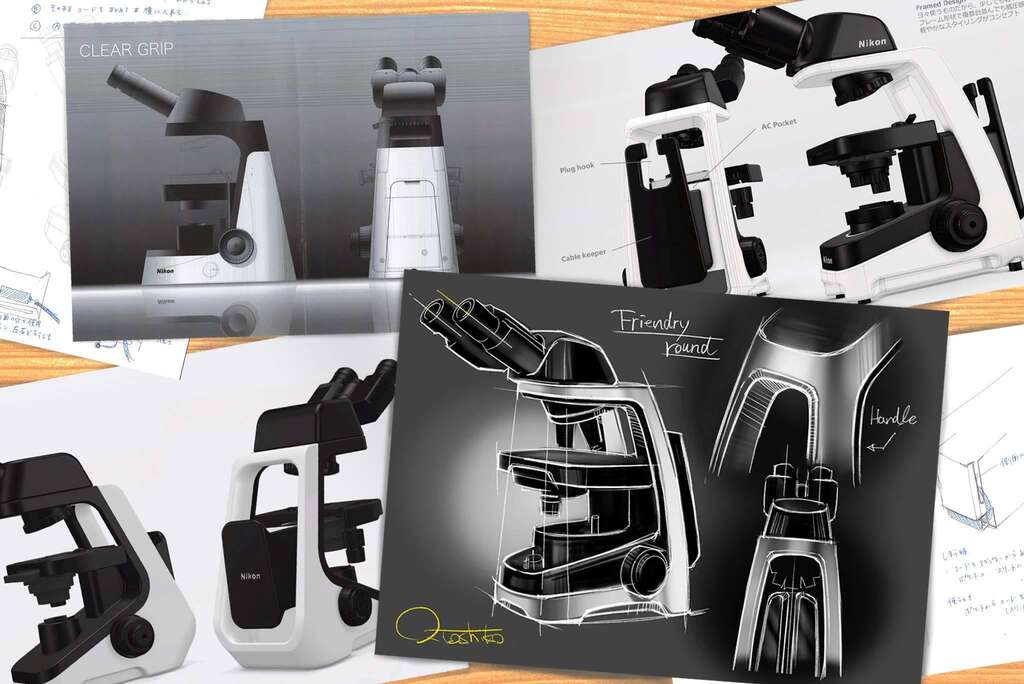

Some prototypes reflecting various ideas that were considered during the development process.
A partner for exploring new worlds

Saigo: We believe that the Eclipse Ei is the ideal educational microscope, one that resulted from countless discussions, design iterations and collaborations across multiple teams. We are proud to have made such an excellent microscope. We hope that when you look through this microscope, the doors to your curiosity will open, leading you into unknown worlds.

Suzuki: I did everything I could as a designer. I believe that people will think this is indeed a good microscope. I hope that our customers will make full use of this easy-to-view, easy-to-use, easy-to-understand microscope to cultivate their growth and education.

Odajima: Our main hope for this microscope is that it becomes a powerful tool for students who want to work in the medical and research fields to achieve their dreams. We would be delighted if it becomes a reliable partner for those who are learning about new worlds.


